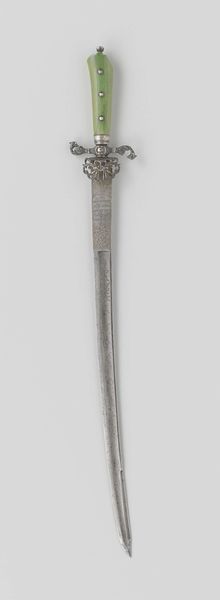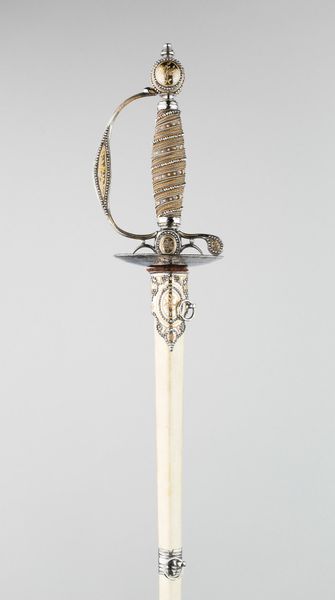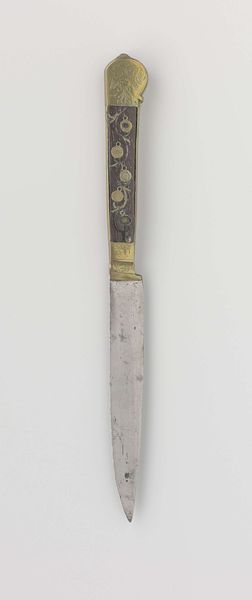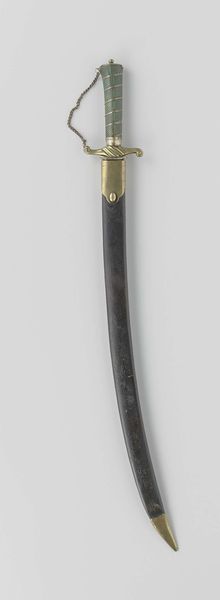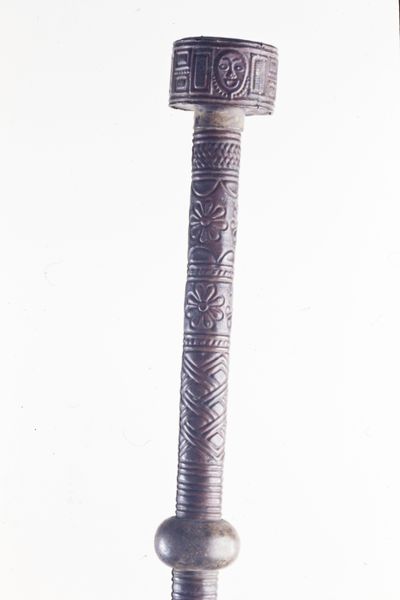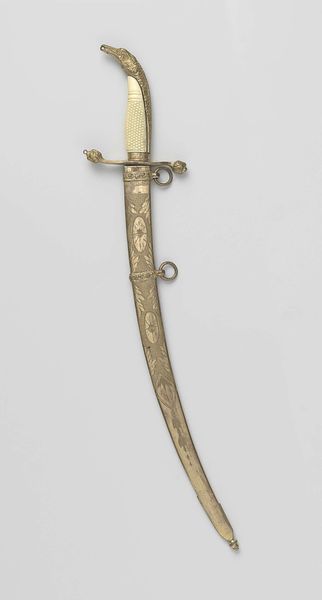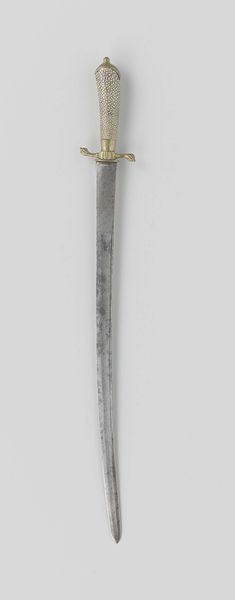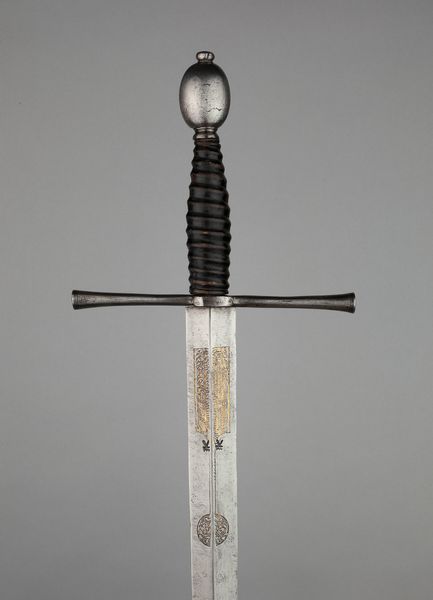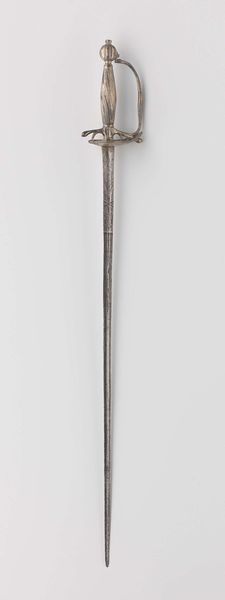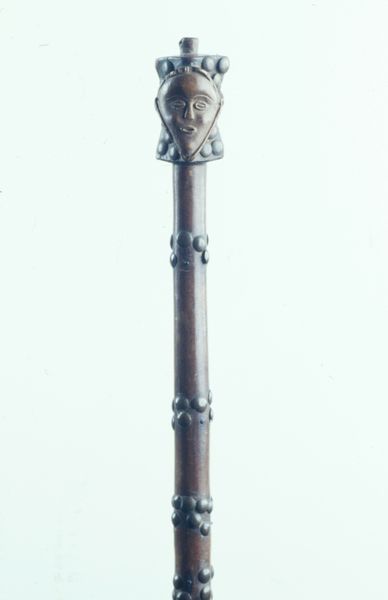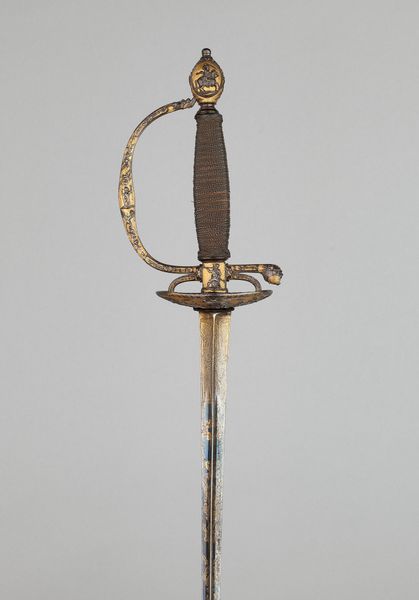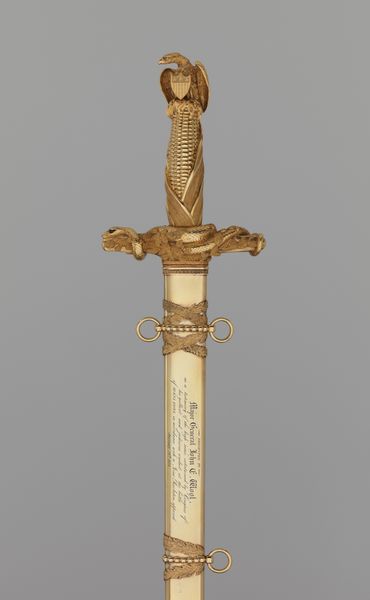
carving, metal, wood
#
carving
#
metal
#
wood
#
history-painting
#
decorative-art
Dimensions: length 47.5 cm, width 6.2 cm, height 3.2 cm, length 32.4 cm, width 3.1 cm
Copyright: Rijks Museum: Open Domain
This Insteekbajonet, crafted by Abraham du Cellieé, is more than a mere weapon; it is a cultural artifact, a symbol imbued with layers of meaning that reach far beyond its immediate purpose. The bayonet’s blade, designed for close-quarters combat, features a sun-like gilded guard. This connects it to a long tradition of associating the sun with power and divinity. Across cultures, from ancient Egypt to the Roman Empire, the sun has been a potent symbol of authority and life-giving force. Consider the evolution of the halo in religious art, or the sunburst motifs adorning royal regalia. The sun, an emotional and psychological reference to the life force, has been carried down through history, shifting in meaning yet retaining its core association with power. It is a reminder of how collective memory and subconscious processes shape our understanding of visual symbols. Here, the sun transforms into a signifier of military might, subtly suggesting that the possessor of this weapon wields a kind of divine, unstoppable force. The cyclical progression of the sun emblem continues, resurfacing in new contexts, and accumulating layers of significance.
Comments
No comments
Be the first to comment and join the conversation on the ultimate creative platform.
